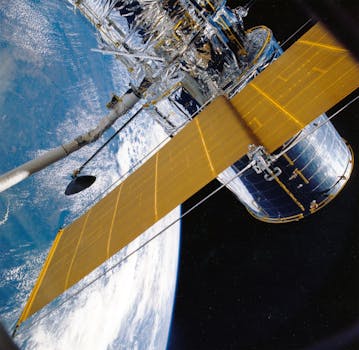Connecting the Globe: The Impact of Orbital Technology on Global Communication

Connecting the Globe: The Impact of Orbital Technology on Global Communication
Orbital Technology and Global Communication
Orbital technology has revolutionized the way we communicate globally. With the launch of the first commercial satellite, Intelsat 1, in 1965, the world witnessed a new era in global communication. Orbital technology, also known as satellite technology, has enabled instant connectivity across the globe, bridging the distance between people, businesses, and governments.
Orbital technology works by transmitting signals from a satellite in orbit around the Earth to a receiving station on the ground. This technology has made it possible to communicate with people in remote areas, where traditional communication infrastructure is limited or non-existent. The impact of orbital technology on global communication has been significant, with benefits ranging from improved international relations to increased economic growth.
Benefits of Orbital Technology
The benefits of orbital technology are numerous. One of the most significant advantages is the ability to communicate with people in remote areas. Satellite communications have enabled people in these areas to access essential services such as education, healthcare, and financial services. Orbital technology has also improved international relations by enabling instant communication between governments and international organizations.
Another benefit of orbital technology is the ability to provide communication services during natural disasters and conflicts. Satellite communications have enabled emergency responders to communicate with each other and with the public during these times, saving countless lives. Additionally, orbital technology has enabled the development of new industries such as telecommunications, navigation, and meteorology.
Future Developments in Orbital Technology
The future of orbital technology looks promising, with several developments on the horizon. One of the most significant developments is the launch of new satellite constellations, such as the OneWeb and Starlink constellations. These constellations will provide high-speed, low-latency internet connectivity to people around the world, bridging the digital divide and enabling new economic opportunities.
Another development is the use of advanced materials and technologies, such as 3D printing and artificial intelligence, to improve the efficiency and effectiveness of satellite communications. These technologies will enable the development of smaller, more efficient satellites that can be launched at a lower cost, making satellite communications more accessible to people around the world.
Conclusion
In conclusion, orbital technology has had a significant impact on global communication, enabling instant connectivity across the globe. The benefits of orbital technology range from improved international relations to increased economic growth. As the technology continues to evolve, we can expect to see new developments and innovations that will further improve global communication. With the launch of new satellite constellations and the use of advanced materials and technologies, the future of orbital technology looks promising, and we can expect to see significant improvements in global communication in the years to come.

